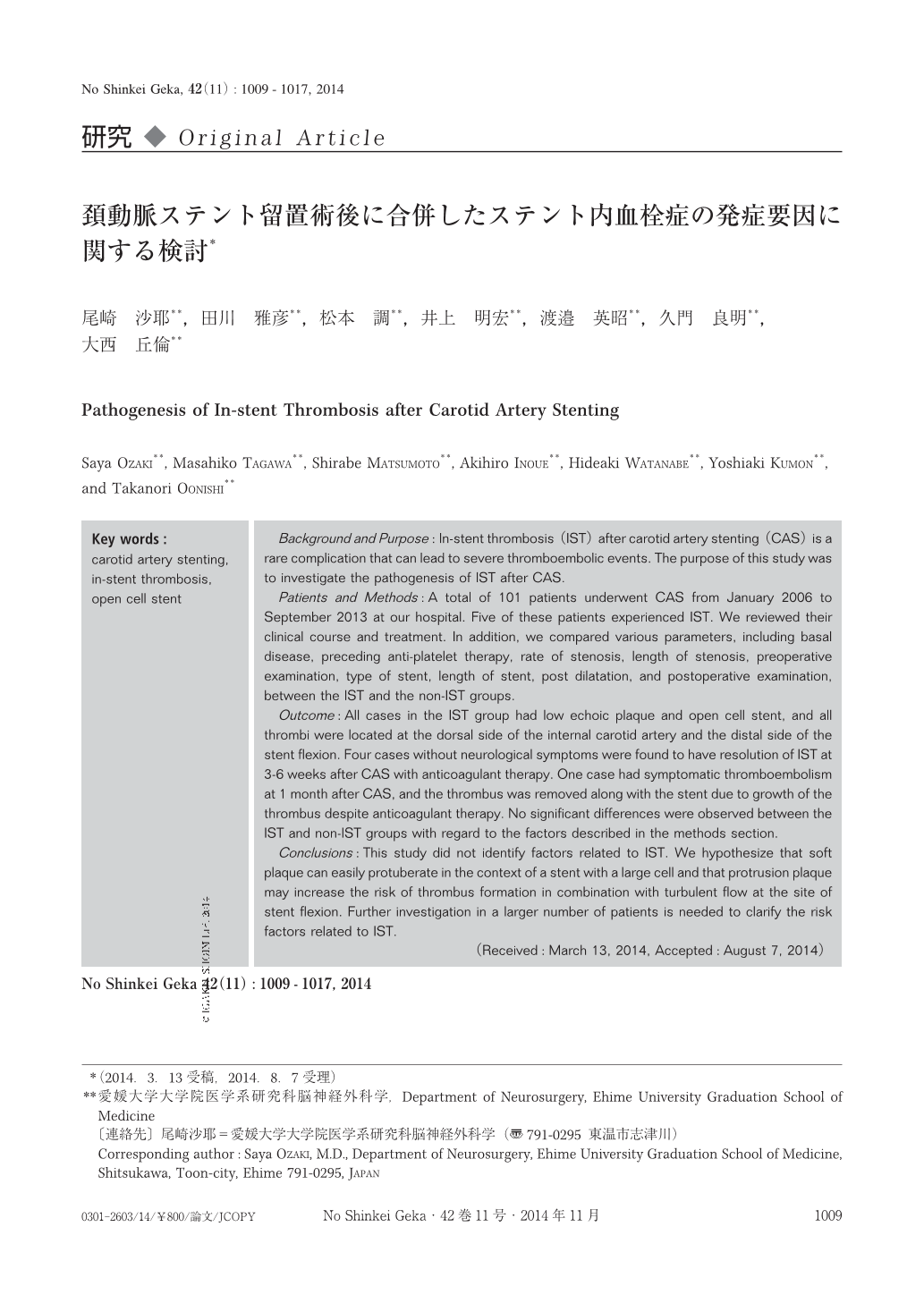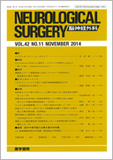Japanese
English
- 有料閲覧
- Abstract 文献概要
- 1ページ目 Look Inside
- 参考文献 Reference
Ⅰ.はじめに
頚動脈ステント留置術(carotid artery stenting:CAS)は頚動脈内膜剝離術(carotid endarterectomy:CEA)high risk例を対象に汎用されている.本法に特異的な合併症として,発症頻度は低いものの重篤な障害を残すこともあるステント内血栓症が問題となっている5).そこで,今回当施設で経験したCAS施行例を対象にステント内血栓症の発症要因や発症時期,治療法について検討し,文献的考察も加えて報告する.
Background and Purpose:In-stent thrombosis(IST)after carotid artery stenting(CAS)is a rare complication that can lead to severe thromboembolic events. The purpose of this study was to investigate the pathogenesis of IST after CAS.
Patients and Methods:A total of 101 patients underwent CAS from January 2006 to September 2013 at our hospital. Five of these patients experienced IST. We reviewed their clinical course and treatment. In addition, we compared various parameters, including basal disease, preceding anti-platelet therapy, rate of stenosis, length of stenosis, preoperative examination, type of stent, length of stent, post dilatation, and postoperative examination, between the IST and the non-IST groups.
Outcome:All cases in the IST group had low echoic plaque and open cell stent, and all thrombi were located at the dorsal side of the internal carotid artery and the distal side of the stent flexion. Four cases without neurological symptoms were found to have resolution of IST at 3-6 weeks after CAS with anticoagulant therapy. One case had symptomatic thromboembolism at 1 month after CAS, and the thrombus was removed along with the stent due to growth of the thrombus despite anticoagulant therapy. No significant differences were observed between the IST and non-IST groups with regard to the factors described in the methods section.
Conclusions:This study did not identify factors related to IST. We hypothesize that soft plaque can easily protuberate in the context of a stent with a large cell and that protrusion plaque may increase the risk of thrombus formation in combination with turbulent flow at the site of stent flexion. Further investigation in a larger number of patients is needed to clarify the risk factors related to IST.

Copyright © 2014, Igaku-Shoin Ltd. All rights reserved.


